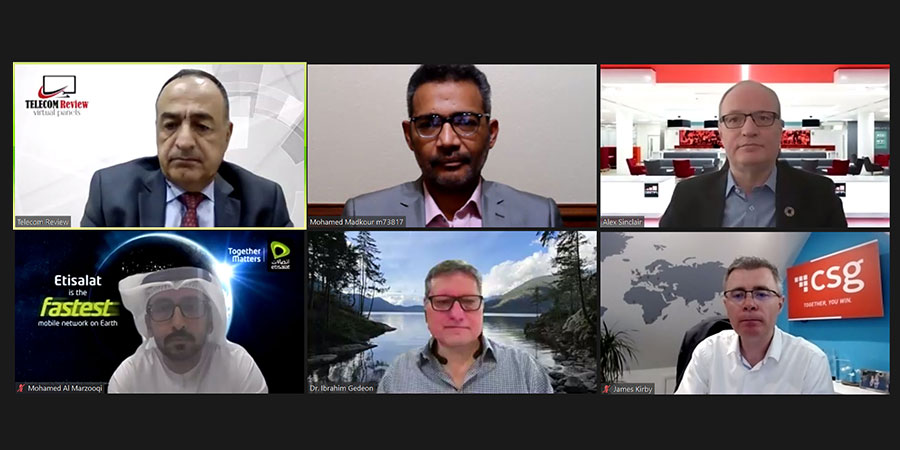In its recent virtual panel, Telecom Review has tackled the topic of 5G from a new viewpoint. Under the theme “Beyond 5G: The endless benefits of 5G to operators”, moderator Toni Eid, CEO and founder of Telecom Review Group, has addressed the panelists with a question on diversification, being key nowadays. How does 5G provide the needed diversification? And how?
Alex Sinclair, CTO, GSMA, started by naming the various sectors in which 5G has potential. “I’ll start with public services. It has helped the digitalization of many countries around the world and it has demonstrated tech health. There are so many health applications operating with various operators, but Covid-19 has proven that you don’t need to travel miles to see a doctor. You don’t even need to do that when you’ve got a critical condition. You could do it safely and more conveniently from home. In addition, Covid-19 has demonstrated what you can do from an educational point of view as well. But if you look at where I see the greatest potential, I definitely think manufacturing is one of them, because I am seeing such a huge demand, seeing people coming urging us to speed up.”
He also spoke about airports and shipping ports where massive amount of activity is taking place all over the world.
Mohamed Al Marzooqi, VP Technology synergies, Etisalat Group, commented that “the opportunities with 5G will be much bigger than the appetite of telecom operators. Some of the operators might even decide to focus on one or two sectors only because either they don’t have the experience to focus on the remaining ones, or they don’t have the investment and capability.”
He then shared a few numbers that forecast what we can expect in the future:
“The total value of the virtual world, mainly gaming, is expected to reach $390 billion within 5 years, $4.6 trillion for the digital wallet, $300 billion for drone business by 2030, and $370 billion annually for orbit connectivity within a few years. In addition, in the health sector, there is a huge project being discussed in the USA concerning a new device using AI and 5G connectivity to test the potential of any human being having cancer by a small test done at home. There is no specific cost yet, but this device costs billions. So we need to think outside the box. There are opportunities and we need to invest wisely.”
Dr. Ibrahim Gedeon, CTO, TELUS, stated that one of the things that all operators are touching upon is that they need to be an inside-driven operator. There are really critical disruptions that need to happen.
“Fundamentally, we all talk about inside driven insights like what our latency is, and what are we enabling to expose. In fact, if you’re a large enterprise, IT departments should have a frictionless ability to manage these things”, he added.
“We need to think about onboarding 5G rather than making 5G part of the things we do today like it is another version of 4G or 2G.”
James Kirby, SVP & Head of EMEA Business, CSG, enumerated the different sectors in which diversification comes in. “It’s not just consumer, it’s government, it’s public services, enterprise, and health care, but it’s also about the diversification of revenue coming into the business. In telecoms, we are used to price plans. You pay a fixed fee and you get a certain number of minutes. In the 5G space, the way these services are going to be paid for is also going to be more diverse than it has been in the past.”
“5G is bringing so much diversification and therefore it will be wrong to presume that we can fit that in to what we have today because the business model around 5G is likely to be quite different, especially if we’re wanting to maximize the return on it”, he added.
Dr. Mohamed Madkour, VP Global Wireless Networks Marketing and Solutions, Huawei, also shared three dimensions of 5G diversification: these are the business, operational, and network/technical aspects.
From the business side, to what concerns consumers, he said multi-dimensional packages and innovative content can be leveraged especially in the Middle East, with two major events coming up: Expo 2020 and World Cup 2022. In this case, OTTs and premium applications would come up with tactics like smart shopping, 5G broadcasting, and playbacks.
On the operational side, continuous investment in digital transformation is crucial.
Additionally, Huawei came up with a new ‘5G Experience Benchmark’ that includes three main indexes: speed, latency, and availability (SLA). By using the SLA formula, precise investment and improved user experience can be guaranteed.










